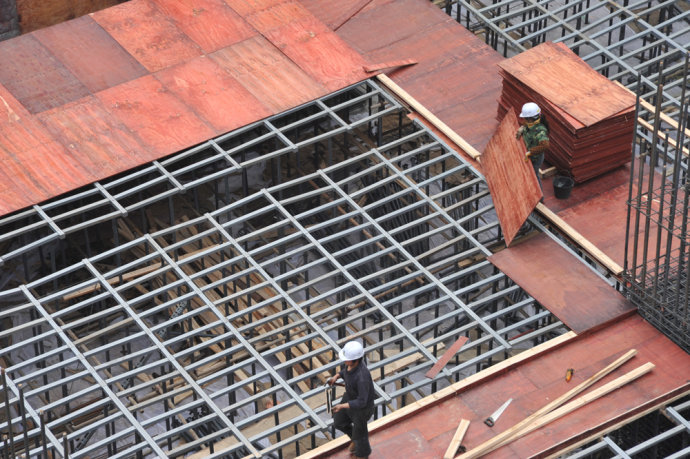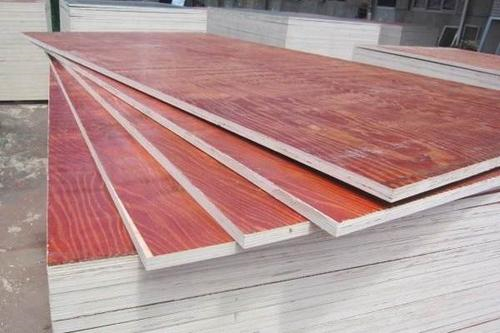Building formwork Building formwork is an important tool in the construction of concrete structures. In structural engineering, formwork engineering generally accounts for 20%~30% of the cost of the concrete structure project, 30%~40% of the engineering labor, and about 50% of the construction period. Formwork technology directly affects the quality, cost and benefit of engineering construction. Therefore, it is an important part of promoting the progress of construction technology in my country. Full attention should be paid to building formwork in construction projects, and the development history and current situation of building formwork, can be predicted its future development trend.

Development history of building formwrok
Formwork engineering, as a special content in concrete construction engineering, has a long development process history at home and abroad. The original concrete formwork is made of wooden loose plates, which are assembled into concrete molding models according to the structural shape. This kind of formwork assembly and disassembly is time-consuming and laborious.
At the beginning of the 20th century, prefabricated shaped wood formwork began to appear. According to the needs of the project, a set of shaped formwork with several different sizes was designed in advance. Design, assemble according to the layout diagram on site, and can continue to be used after dismantling the mold. This prefabricated wood formwork has been used for a long time, and it is still used in some places.
In the second half of the 1950s, large-scale formworks began to appear in France and other countries, using mechanical instead of labor, the installation, dismantling and moving of large horizontal slabs are carried out, and the construction is carried out by the flow method, which can improve labor efficiency, save labor and shorten the construction period. This formwork construction method quickly spread to European countries.
In the 1960s, the combined stereotyped formwork began to appear. This formwork is in the original assembly type. On the basis of the stereotyped formwork, it is improved, and the matching assembly accessories can be assembled into large formworks of different sizes. It is different from the previous large-scale mold plate with fixed size. Because of its modular design, the size of the large-scale formwork can be changed through the combination of plates. It can be assembled once, reused many times, and can be assembled flexibly at any time. The size of the assembled formwork is changed, so it can be used in a wider range, and it has become the most important form of formwork in cast-in-place concrete projects.
From the perspective of the development process of formwork materials, the earliest formwork was made of wood. In 1908, the United States first used steel formwork. With the large-scale application of steel formwork in engineering, its superiority has become more and more obvious. Some enterprises have begun to study the design, production and management of steel formwork, and steel formwork has developed rapidly. In construction engineering be widely used. In 1964, aluminum alloy formwork appeared again, but so far it has not hindered its widespread use.
Application status of building formwork
Combined steel formwork
Steel formwork is a stereotyped tool formwork, which can be assembled into various shapes and sizes by connecting components.
It is suitable for a variety of structural forms, does not save wood, and is also a major reform of concrete construction technology. The use of steel formwork can save labor, reduce engineering costs, provide quality, and speed up the progress of the project. Formwork that can be used for general industrial and civil building structures. It can also be used for tunnel construction, cantilever formwork for dams, sliding formwork for tall structures, etc.
All-steel large formwork
At present, due to the rapid economic development and scarcity of land resources in China, large-scale high-rise cast-in-place shear. Force wall construction increased dramatically. In the construction of cast-in-place shear walls, all-steel large formwork is mostly used, which can be freely combined with modular plates, which can fully meet the needs of different building construction, and greatly improve the efficiency and quality of shear wall structure construction. The construction is simplified, the construction cost is reduced, and the construction period is shortened. The all-steel large formwork can be reused more than 500 times, and the flatness of the shear wall after pouring is better than the national standard.
Wood plywood formwork
Wood plywood formwork surface-treated with phenolic film, with light material, good performance and flat surface.It has the characteristics of smoothness, easy demoulding, strong wear resistance, and can be reused many times. It is suitable for various structural constructions such as walls and floors. It is one of the widely used formwork forms abroad. In my country, wood plywood formwork has been used in building construction as early as the 1970s. In recent years, many construction units have adopted wood plywood formwork in national new technology demonstration projects.

Bamboo Plywood Formwork
Phenolic film faced bamboo plywood formwork has the characteristics of abundant resources, good performance and low price. It is an ideal material for building formwork and is mainly suitable for the construction of horizontal structures such as floors and platforms. There are many manufacturers that can produce film-faced bamboo plywood formwork. Bamboo plywood formwork has been widely used in key projects in various places and national new technology demonstration projects, and the use effect is also good.
Aluminum alloy formwork
Construction aluminum alloy formwork system, because of its light weight, easy handling, convenient operation, can be repeated multiple times. The characteristics of reuse and other characteristics have attracted more and more attention from related projects at home and abroad.
Development prospect of building formwork
Since the 1990s, my country’s building structure system has developed greatly, high-rise buildings and super high-rise buildings. A large number of buildings were built, and large-scale infrastructure and urban transportation and highways developed rapidly. These modern large-scale building systems require high engineering quality and complex construction technology. Therefore, building construction technology must be greatly improved. Similarly, new requirements are also put forward for formwork technology, and advanced formwork technology must be adopted to meet the requirements of modern construction engineering.
